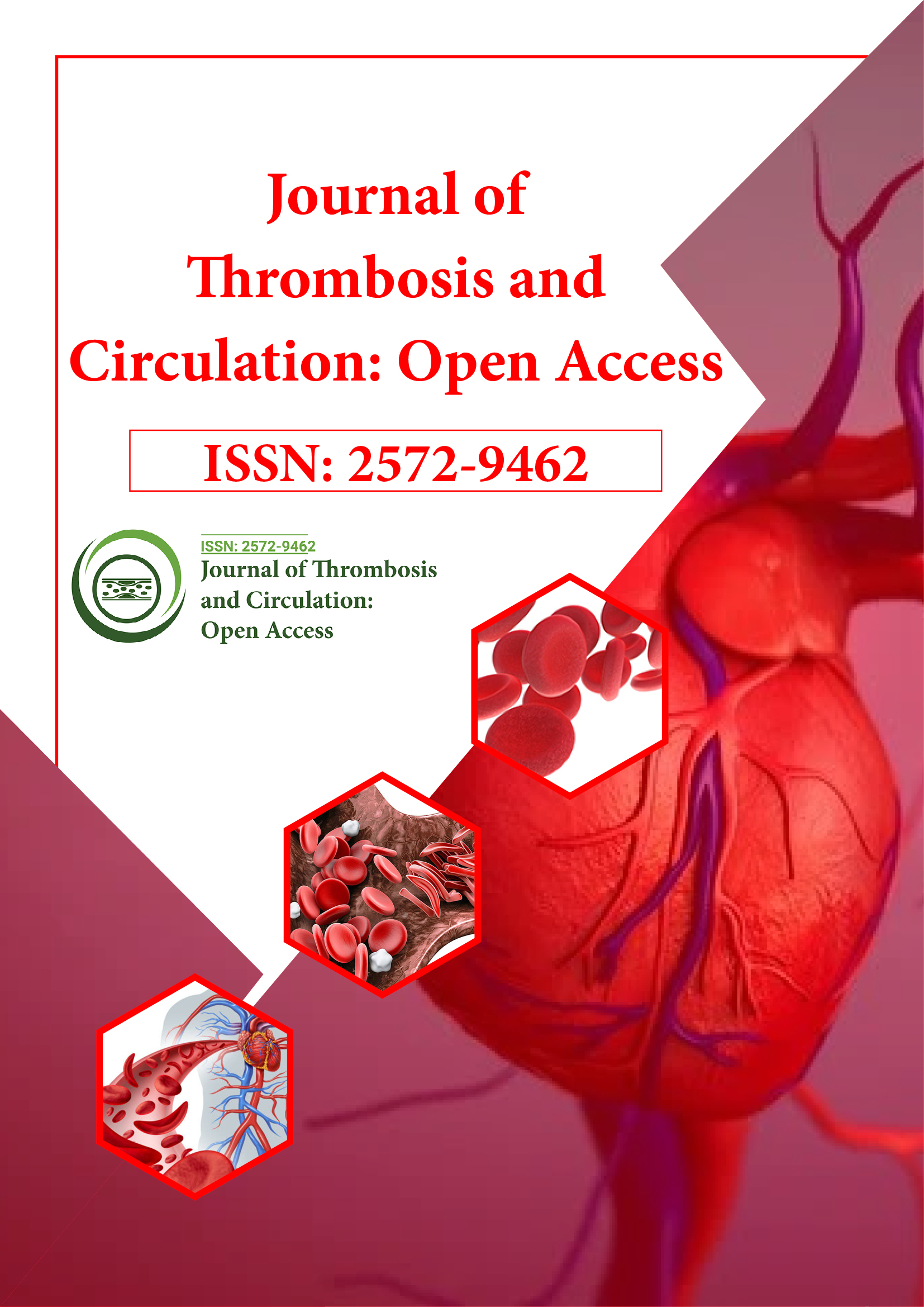Indexed In
- RefSeek
- Hamdard University
- EBSCO A-Z
- Publons
- Google Scholar
Useful Links
Share This Page
Journal Flyer

Open Access Journals
- Agri and Aquaculture
- Biochemistry
- Bioinformatics & Systems Biology
- Business & Management
- Chemistry
- Clinical Sciences
- Engineering
- Food & Nutrition
- General Science
- Genetics & Molecular Biology
- Immunology & Microbiology
- Medical Sciences
- Neuroscience & Psychology
- Nursing & Health Care
- Pharmaceutical Sciences
Opinion Article - (2023) Volume 9, Issue 4
Symptoms and Diagnosis of Acute Anterior Circulation Ischemic Stroke
Korean Jindra*Received: 19-Jun-2023, Manuscript No. JTCOA-23-22274; Editor assigned: 21-Jun-2023, Pre QC No. JTCOA-23-22274 (PQ); Reviewed: 06-Jul-2023, QC No. JTCOA-23-22274; Revised: 13-Jul-2023, Manuscript No. JTCOA-23-22274 (R); Published: 21-Jul-2023, DOI: 10.35248/2572-9462.23.9.239
Description
Stroke is a critical medical condition that occurs when there is a sudden disruption of blood flow to the brain, leading to a loss of brain function. Among the different types of strokes, acute anterior circulation ischemic stroke is one of the most common and potentially debilitating.
Acute anterior circulation ischemic stroke, also known as anterior circulation stroke, is a type of ischemic stroke that affects the anterior circulation of the brain. The anterior circulation comprises the carotid arteries and their branches, which supply blood to the front part of the brain. When a blockage or clot forms in these arteries, it restricts blood flow and oxygen to the brain tissue, leading to the development of a stroke.
Causes of acute anterior circulation ischemic stroke
The leading cause of acute anterior circulation ischemic stroke is the formation of a blood clot or plaque within the carotid arteries. These clots usually arise due to atherosclerosis, a condition in which cholesterol and other fatty substances build up on the arterial walls, forming plaques that can rupture and block blood flow.
Other potential causes include:
Cardio embolism: When a blood clot originates in the heart and travels to the brain through the bloodstream, it can cause a stroke by obstructing a cerebral artery.
Small vessel disease: Damage or blockage in the smaller blood vessels within the brain can also lead to an ischemic stroke.
Arterial dissection: A tear in the arterial wall can cause blood to accumulate and form a clot, leading to a stroke.
Symptoms of acute anterior circulation ischemic stroke
Recognizing the signs and symptoms of acute anterior circulation ischemic stroke is vital for timely intervention. The symptoms often occur suddenly and may include:
• Sudden numbness or weakness on one side of the face, arm, or leg, often affecting one entire side of the body.
• Trouble speaking or understanding speech.
• Confusion, disorientation, or difficulty comprehending.
• Severe headache without a known cause.
• Trouble with vision, such as blurred or double vision.
• Dizziness or difficulty walking, loss of balance, or coordination.
It is essential to act quickly if someone experiences any of these symptoms, as immediate medical attention can significantly improve the chances of recovery and reduce potential complications.
Diagnosis and treatment
Diagnosing acute anterior circulation ischemic stroke typically involves a combination of clinical assessment, medical history review, and imaging tests. Computed Tomography (CT) or Magnetic Resonance Imaging (MRI) scans help identify the location and extent of the brain damage and determine whether the stroke is ischemic or hemorrhagic (caused by bleeding).
Once diagnosed, the treatment of acute anterior circulation ischemic stroke aims to restore blood flow to the affected brain tissue and prevent further damage. Intravenous thrombolytic therapy, also known as "clot-busting" drugs, can be administered within a specific time window after symptom onset to dissolve the clot and restore blood flow. Mechanical thrombectomy, a procedure where a catheter is used to remove the clot directly, is another option for eligible patients.
Post-stroke rehabilitation is critical to help patients regain lost functions and improve their quality of life. Physical therapy, speech therapy, occupational therapy, and psychological support play essential roles in the recovery process.
Prevention
Preventing acute anterior circulation ischemic stroke involves managing and controlling risk factors such as high blood pressure, diabetes, high cholesterol, smoking, and obesity. Regular exercise, a healthy diet, and not smoking can significantly reduce the risk of stroke. For individuals with a history of strokes or other cardiovascular conditions, adherence to prescribed medications and regular medical check-ups are prominent.
Acute anterior circulation ischemic stroke is a severe medical emergency that requires prompt recognition and immediate medical attention. Understanding the causes, symptoms, and treatment options can help improve outcomes for patients who experience this type of stroke. Raising awareness about stroke risk factors and preventive measures can also contribute to reducing the burden of stroke in our society. Remember, acting quickly can make a significant difference in someone's life when facing a stroke.
Citation: Jindra K (2023) Symptoms and Diagnosis of Acute Anterior Circulation Ischemic Stroke. J Thrombo Cir.9:239.
Copyright: © 2023 Jindra K. This is an open-access article distributed under the terms of the Creative Commons Attribution License, which permits unrestricted use, distribution, and reproduction in any medium, provided the original author and source are credited.
